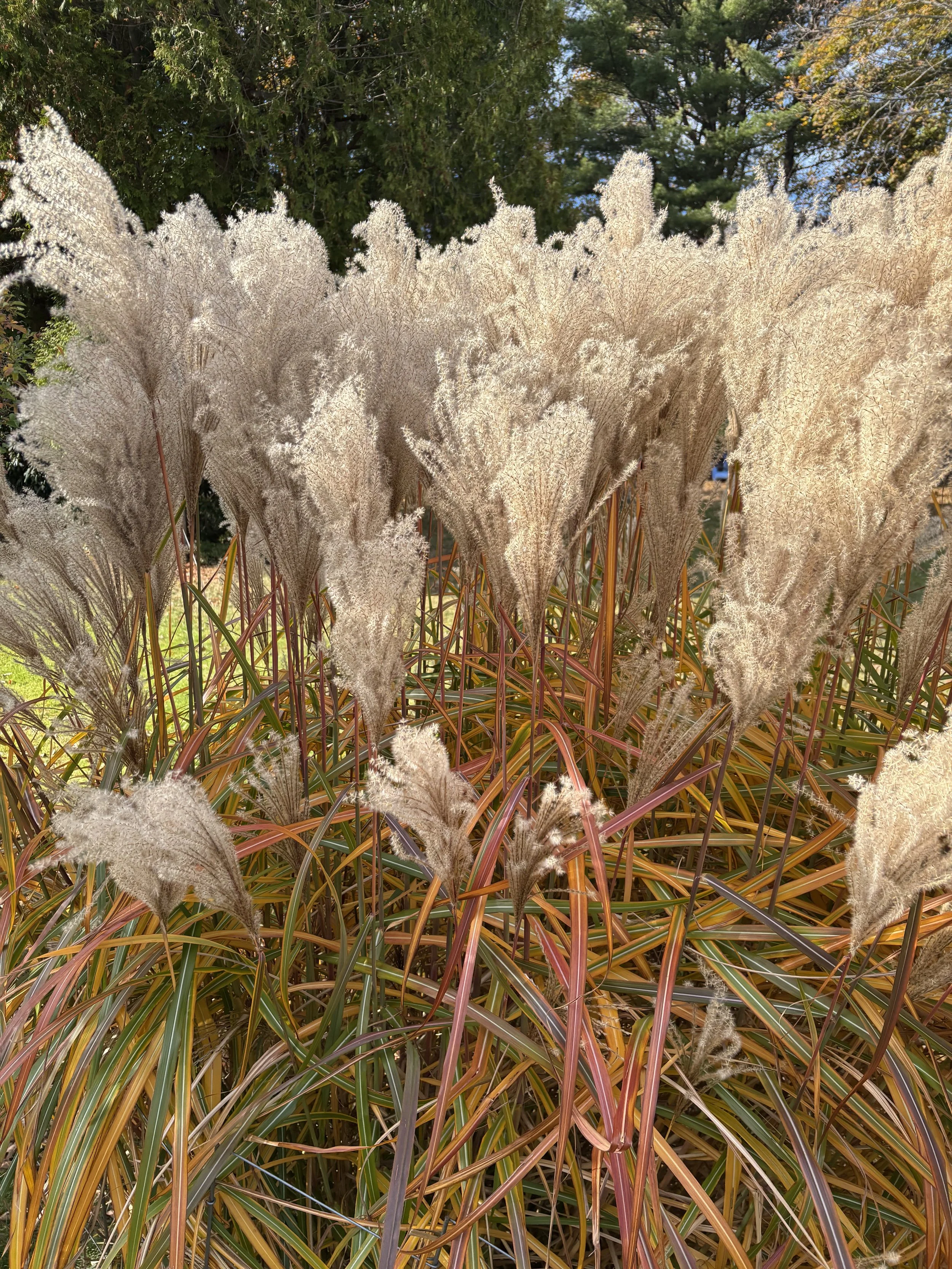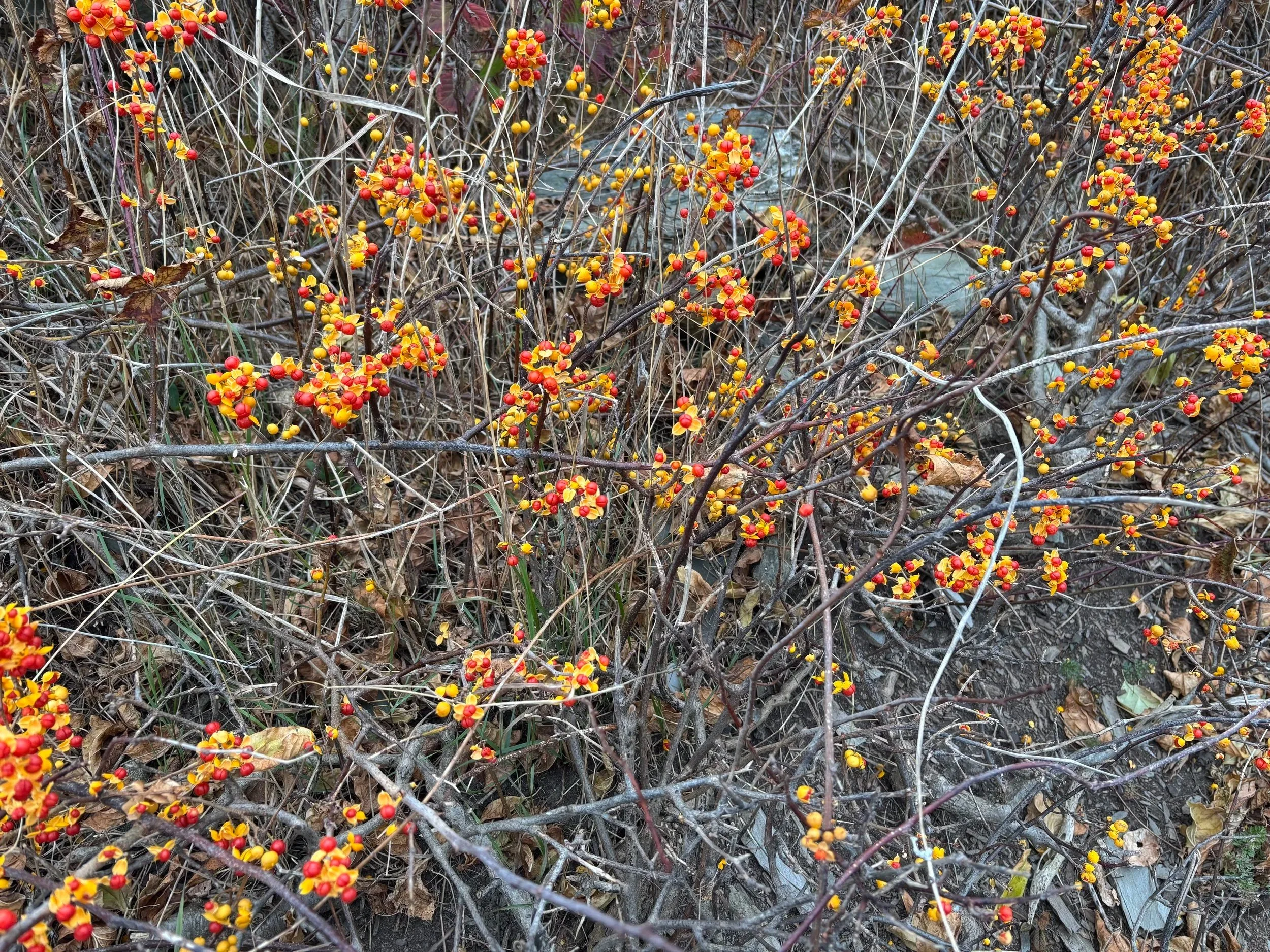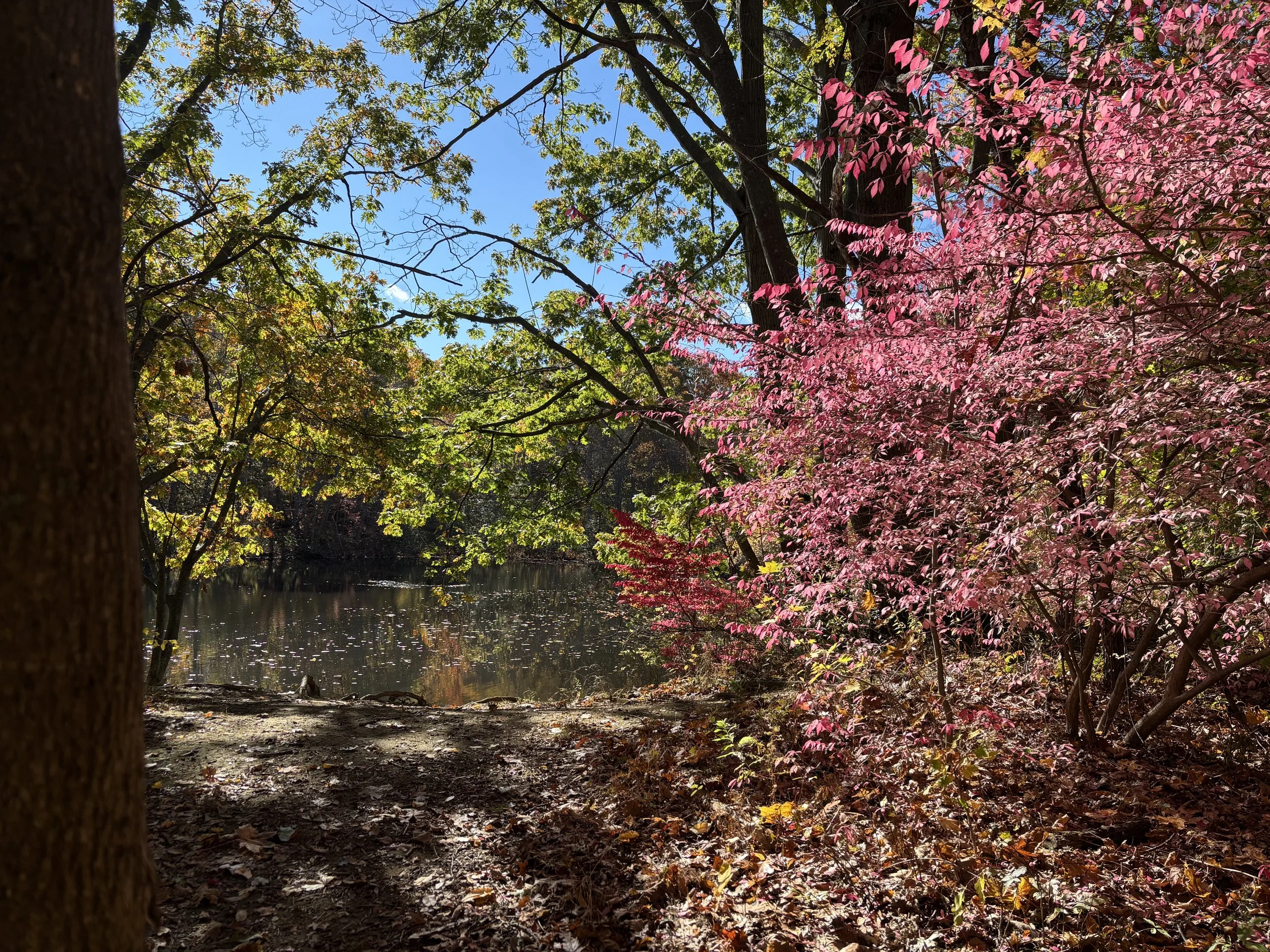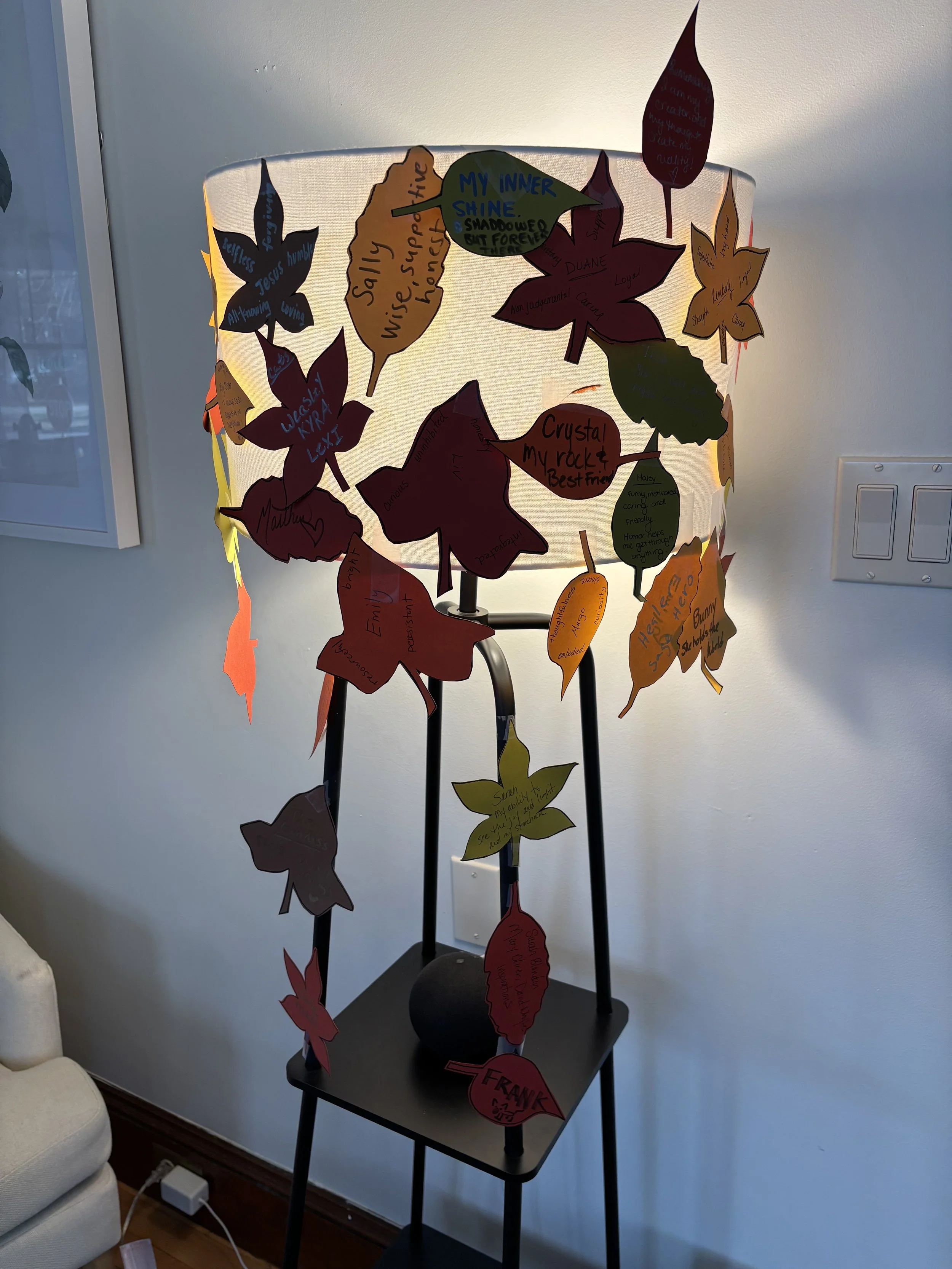Learning to Glow Differently
The sudden darkness took me aback this year. Deep into autumn, it had been so warm and bright. Then, like a switch, a chill lasted a few days, the leaves were whipped from the trees — and it was dark. Really dark. This happens every year?
This transition often signals a certain kind of time pressure for me — to fit in all the errands before it gets dark, to plan all the things before the holidays, to stay productive, to end the year strong. But this year, I’ve been aware of how nature is really, really asking the opposite of us. She wants us to slow down, eat warm food, turn inward, rest.
In our office, there’s a stuffed sloth we’ve named Slowdown. He’s become something of a mascot at Heart Stone — a gentle symbol of taking it slow. Each month during staff meeting, we recognize a team member for something they’ve brought to the practice, and Slowdown spends the month in their office. What began as a lighthearted ritual has grown into a reminder of something deeper: healing often happens when we pause.
Slowdown, the Heart Stone mascot, chilling in a restorative pose.
Recently, while watching a short film with my kids — Why Deep Sea Creatures Get Creepier the Deeper You Go — I found myself taking note of what felt like some very fitting metaphors. The narrator described how, in the deepest parts of the ocean, “life is slow. Creatures grow slowly, reproduce rarely, and live for centuries.” Down there, where sunlight never reaches, temperatures hover near freezing and pressure is more than a thousand times what we experience on the surface. “To a human body,” the narrator said, “it would be instantly fatal. And yet, life does not just survive here — it thrives.”
That line has stayed with me. There’s something about this “desert of silt and silence” that feels internally familiar. The darker seasons of life can feel impossible. Pressures mount. Light fades. Time feels strange. And yet, like those deep-sea creatures, we adapt. We bend and reshape ourselves. We learn to glow differently.
In the documentary, the narrator said that nearly three-quarters of deep-sea life produces light — bioluminescence. “The reasons vary wildly,” he said, “hunting, hiding, mating, or simply surviving.” I love that image — a world that glows from within, in the cold and the dark.
Maybe this is what slowing down helps us remember: even when things feel heavy or dim, light still exists inside us. Sometimes, we just have to adjust our eyes — and our minds — to perceive it.
Therapy, in many ways, is its own kind of deep-sea exploration — fifty-five minutes set aside each week to descend beneath the noise and look around. Most of us don’t take that kind of time otherwise: time to notice, to breathe, to name what’s working and what isn’t. Therapy gives shape to what’s been swirling beneath the surface. It’s a time to pause and ask, What am I actually needing right now? What do I want to carry forward — and what can I finally put down?
In Narrative Therapy, one of the approaches I practice, we ask questions that help people look at their experiences in new ways — questions that draw out meaning and reveal multiple perspectives. Questions like:
“What does that moment tell you about what you care about most?”
“What might you notice if you could watch that argument as though you were outside the room looking in?”
“What did you have to know in order to handle that situation? What is it like to recognize that you had that knowledge?”
These aren’t just questions about stories; they’re invitations to slow down inside your own life — to become more involved in the meaning-making of it.
The writer Jeanette Winterson, in her essay Why I Adore the Night, writes:
“Food, fire, walks, dreams, cold, sleep, love, slowness, time, quiet, books, seasons — all these things, which are not really things, but moments of life — take on a different quality at night-time, where the moon reflects the light of the sun, and we have time to reflect what life is to us.”
That line feels like a map for this season. As the world cools and darkens, there’s wisdom in turning inward — in trusting that slowing down isn’t losing time, but finding it again.
Our waiting room, collaborative art project this fall: Tree of Strength.
Here at Heart Stone, we’ve been practicing that, too — choosing slower, steadier ways of being. Slowdown the sloth has become a sweet reminder that even in stillness, something important is happening: healing, reorganizing, restoring.
Maybe, in this darker season, slowing down isn’t a sign of weakness or exhaustion, but of brilliant adaptation — like those deep-sea creatures that have learned to thrive under unimaginable pressure, glowing in ways we barely understand.
So as the year winds down, I’ll leave you with this:
What helps you find your light when the world feels dark and heavy?
May this be a season of rest and reflection — and of rediscovering your quiet resilience.






